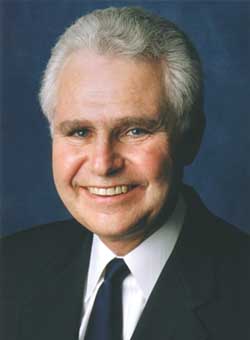
The California Air Resources Board (ARB) recently issued its long-awaited draft Climate Change Scoping Plan (Draft Plan) for implementing Assembly Bill (AB) 32, California’s ambitious greenhouse gas (GHG) emissions-reduction initiative. AB 32 requires California to reduce GHG emissions to 1990 levels by 2020—roughly a 30% reduction in projected “business-as-usual” emissions levels or 168 million metric tons of CO2 equivalent.
In its own words, the Draft Plan proposes a comprehensive set of actions designed to not only reduce overall GHG emissions but also improve the environment, reduce dependence on oil, diversify energy sources, save energy, and enhance public health “while creating new jobs and enhancing the growth in California’s economy.” To achieve these modest goals, the Draft Plan identifies more than a dozen emissions-reduction measures that cut across the energy, transportation, industrial, and residential/commercial sectors. Key energy-related measures include increasing the state’s renewables portfolio standard (RPS) to 33%, expanding energy-efficiency programs, and participating in a regional cap-and-trade program being proposed by the Western Climate Initiative (WCI).
The task at hand is immense and time is short—regulations must be effective no later than January 2012, leaving only eight years to achieve the required emissions reductions. Success will require luck, extraordinary effort by regulators, and consumers’ willingness to accept significantly higher energy prices.
Audacious assumptions
The Draft Plan projects that significant reductions in GHG emissions can be achieved by increasing the RPS to 33% and expanding energy-efficiency programs to reduce demand by more than 32,000 GWh. A 33% RPS translates into an additional 5,800 MW of renewable energy above the current 20% by 2010 requirement, which utilities are already struggling to meet. Meeting the Draft Plan’s increased energy-efficiency savings goal would require nearly doubling the amount of efficiency embedded in California Energy Commission load forecasts.
The Draft Report further assumes that 3,000 MW of new solar electric systems will be installed under California’s Million Solar Roofs Program. By way of comparison, in order to achieve 210 MW of solar photovoltaic capacity in the San Diego area over the next three years, it has been estimated that residential installations would need to increase by nearly 25,000 over current levels.
Transmission remains a key stumbling block. California has had an increasingly difficult time approving and constructing new transmission projects necessary to deliver renewable power to consumers. Case in point: After two years it is still unclear when the California Public Utilities Commission will issue a decision on a proposed transmission project that would connect Southern California to areas near the California-Mexico-Arizona border, where significant wind, solar, and geothermal generation potential exists.
A regional approach
The benefits of reducing GHG emissions aren’t limited to geographical boundaries; if one state reduces its carbon footprint, neighboring states benefit from cleaner air. Thus, it makes sense for California to work closely with the WCI to develop a regional cap-and-trade program that can deliver regional emissions reductions. It’s unclear, however, whether the steps California has already taken to develop a single-state cap-and-trade program would be consistent with WCI’s potential approach.
To add to the confusion, there is no guarantee that WCI members will agree on a regional cap-and-trade program and, even if agreement is ultimately reached, when the program would be implemented. The AB 32 deadlines for developing and implementing emissions reduction measures don’t give California any flexibility to defer action until the WCI acts. On the other hand, the possibility that California might need to make midstream changes to (or even abandon) its cap-and-trade program to participate in a regional program engenders significant uncertainty and will hinder its implementation. Beyond these regional coordination challenges looms the possibility that federal legislation might preempt state and regional programs altogether.
At what cost?
Though the Draft Plan identifies potential economic benefits associated with its recommendations, there is little doubt that consumers will face higher energy prices as the state’s resource profile shifts to satisfy AB 32. A preliminary analysis conducted by the Electric Power Research Institute shows wholesale electricity prices in the West, already some of the highest in the nation, more than doubling in 2012 under certain scenarios.
Higher market prices for power should encourage increased investment and innovation in more-efficient “clean technologies” that, over the long term, should lead to more cost-effective and environmentally friendly generation. Nevertheless, piling price increases on top of price increases begs the question, At what point will consumers and politicians say, “Enough is enough!”?
The road ahead
The science is clear: Actions must be taken soon to confront global warming. Increased renewable generation, expanded energy efficiency, and market-based cap-and-trade programs will all play important roles. The success of these efforts, however, will depend in large part on the actions of regulators, who must ensure that critical infrastructure, programs, and policies are in place and functioning effectively.
The Draft Plan is an important first step toward meeting the goals in AB 32, but, like a lot of initial steps, it kicks up more questions than answers.
—Steven F. Greenwald (stevegreenwald@dwt.com) leads Davis Wright Tremaine’s Energy Practice Group. Jeffrey P. Gray (jeffgray@dwt.com) is a partner in the firm’s Energy Practice Group.









